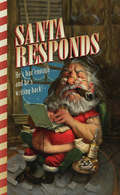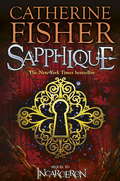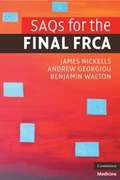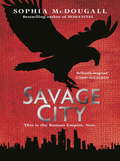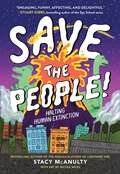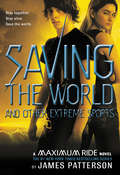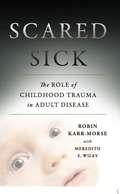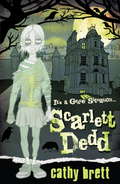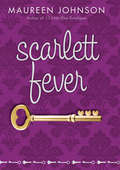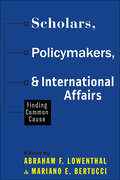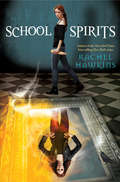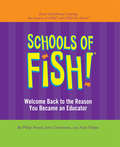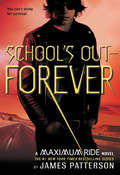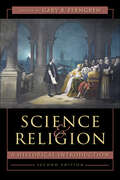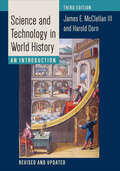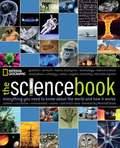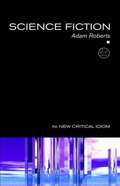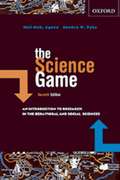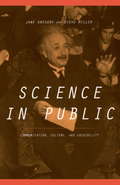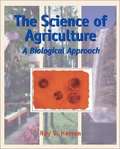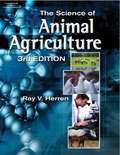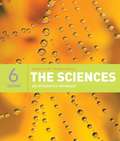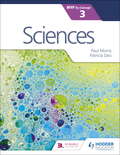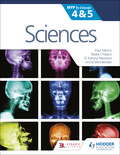- Table View
- List View
Santa Responds: He's Had Enough...and He's Writing Back!
by Santa ClausEver wonder what Santa does with all those letters? (And all those cookies?) After a particularly long, cold night staring at nine smelly reindeer butts, the old man lets loose with the real answers to those stupid, whiny, hard-to-read letters from kids. <P><P> Turns out, we really do get what we deserve. Dear Billy, I know you honestly believe that the good deeds you rattled off represent your behavior for the entire past year rather than the activities that occurred during the two hours leading up to the writing of this letter. Two hours of good behavior hardly justifies a new Playstation, let alone a trip to Disney World Your pal, Santa
Sapphique
by Catherine FisherFinn has escaped from the terrible living Prison of Incarceron, but its memory torments him, because his brother Keiro is still inside. Outside, Claudia insists he must be king, but Finn doubts even his own identity. Is he the lost prince Giles? Or are his memories no more than another construct of his imprisonment? And can you be free if your friends are still captive? Can you be free if your world is frozen in time? Can you be free if you don't even know who you areInside Incarceron, has the crazy sorcerer Rix really found the Glove of Sapphique, the only man the Prison ever loved. Sapphique, whose image fires Incarceron with the desire to escape its own nature. If Keiro steals the glove, will he bring destruction to the world? Inside. Outside. All seeking freedom. Like Sapphique.
SAQs for the Final FRCA
by Ben Walton Andy Georgiou James NickellsSAQs for the Final FRCA is an invaluable guide to the Short Answer Question paper for the Final FRCA examination, providing 9 papers of 12 questions per paper. Each question is accompanied by a full model answer structured using a star system to indicate the essential, desirable and supplementary information. Most answers also carry references and additional notes giving insight into why a question was written or what the examiner was really after. A highly informative FAQ section gives advice on all aspects of exam preparation. The book is laid out to enable the candidate to practise sitting whole papers of 12 questions or to attempt individual questions. Written by a group of authors who have either just successfully taken the Final FRCA or are regularly involved with training anaesthetists via the Frenchay Final FRCA Crammer Course, SAQs for the Final FRCA is an invaluable tool for your exam preparation!
Savage City: Volume III
by Sophia McDougallImagine a world in which Rome never fell. Now the Empire stretches across the Atlantic, slaves are constructing a giant bridge over the Persian Gulf, and magnetic railways span the globe. But tensions within and without are about to change the face of the earth.Marcus Novius is caught in a massive explosion at the Coliseum which kills his uncle the emperor ... making Marcus, his heir, the new leader of the Roman Empire. Marcus, the healer Sulien and Una, his sister - and Marcus' own love - have been together through thick and thin, fighting for freedom, fighting for their lives, fighting for justice, and Marcus' ascension to Roman throne was supposed to be the start of something magnificent ...But Marcus is horribly wounded himself in the explosion, and Sulien is having problems fighting his way through the terrible devastation to be at his friend's - his emperor's - side. And it's not long before Sulien and Una realise life will never be the same again, for the Roman Empire is about to face its most dangerous enemy ...
Save the People!: Halting Human Extinction
by Stacy McAnulty"Save the People is engaging, funny, affecting and delightful. You&’ll never have more fun learning science." --Stuart Gibbs, bestselling author of the Spy School series "Serious science and great gags, with a bit of hope thrown in.&” --Steven Sheinkin, bestselling author of Bomb and FalloutAn action-packed look at past, present, and future threats to humanity&’s survival—with an ultimately reassuring message that humans probably have a few more millennia in us.Scientists estimate that 99% of all species that have ever existed are now extinct. Whoa. So, it's not unreasonable to predict humans are doomed to become fossil records as well. But what could lead to our demise? Supervolcanos? Asteroids? The sun going dark? Climate change? All the above?! Humans—with our big brains, opposable thumbs, and speedy Wi-Fi—may be capable of avoiding most of these nightmares. (The T. rex would be super jealous of our satellites.) But we're also capable of triggering world-ending events. Learning from past catastrophes may be the best way to avoid future disasters. Packed with science, jokes, and black and white illustrations, Save the People! examines the worst-case scenarios that could (but hopefully won&’t) cause the greatest mass extinction—our own!
Saving the World and Other Extreme Sports: A Maximum Ride Novel (Maximum Ride #3)
by James PattersonIn MAXIMUM RIDE: SAVING THE WORLD AND OTHER EXTREME SPORTS, the time has arrived for Max and her winged "Flock" to face their ultimate enemy and discover their original purpose: to defeat the takeover of "Re-evolution", a sinister experiment to re-engineer a select population into a scientifically superior master race. . . and to terminate the rest. Max, Fang, Iggy, Nudge, Gasman, and Angel have always worked together to defeat the forces working against them--but can they save the world when they are torn apart, living in hiding and captivity, halfway across the globe from one another?
Scared Sick: The Role of Childhood Trauma in Adult Disease
by Robin Karr-Morse Meredith S. WileyThe first years of human life are more important than we ever realized. InScared Sick, Robin Karr-Morse connects psychology, neurobiology, endocrinology, immunology, and genetics to demonstrate how chronic fear in infancy and early childhood- when we are most helpless-lies at the root of common diseases in adulthood. Compassionate and based on the latest research,Scared Sickwill unveil a major public health crisis. Highlighting case studies and cutting-edge scientific findings, Karr- Morse shows how our innate fight-or-flight system can injure us if overworked in the early stages of life. Persistent stress can trigger diabetes, heart disease, obesity, depression, and addiction later on.
Scarlett Dedd
by Cathy BrettYou're dead Scarlett...Previously a poor taste jibe from school frenemies, now a statement of fact. Scarlett is absolutely mortified (in more ways than one) to discover that she's accidentally killed herself while trying to get out of a school trip. Even worse, she's taken her entire family with her.Life as a ghost is pretty dull - if only some of her friends were dead too...
Scarlett Fever (Scarlett Ser. #2)
by Maureen JohnsonFrom top-selling author Maureen Johnson comes the second book in the trilogy about a girl and her hotel.Ever since Mrs. Amberson, the former-aspiring-actress-turned-agent, entered Scarlett Martin's life, nothing has been the same.She's still in charge of the Empire Suite in her family's hotel, but she's now also Mrs. Amberson's assistant, running around town for her star client, Chelsea - a Broadway star Scarlett's age with a knack for making her feel insignificant.Scarlett's also trying to juggle sophomore year classes, her lab partner who is being just a little TOO nice, and getting over the boy who broke her heart.
Scholars, Policymakers, and International Affairs: Finding Common Cause
by Abraham F. Lowenthal and Mariano E. BertucciHow to strengthen both academic research and international policies by improving the connections between scholars and policymakers.Scholars, Policymakers, and International Affairs shows how to build mutually beneficial connections between the worlds of ideas and action, analysis and policy. Drawing on contributions from top international scholars with policy experience in the United States, Europe, Asia, Canada, and Latin America, as well as senior policymakers throughout the Americas, Abraham F. Lowenthal and Mariano E. Bertucci make the case that scholars can both strengthen their research and contribute to improved policies while protecting academia from the risks of active participation in the policy process.Many scholars believe that policymakers are more interested in processes and outcomes than in understanding causality. Many policymakers believe that scholars are absorbed in abstract and self-referential debates and that they are primarily interested in crafting theories (and impressing other scholars) rather than developing solutions to pressing policy issues.The contributors to this book confront this gap head-on. They do not deny the obstacles to fruitful interaction between scholars and policymakers, but, drawing on their own experience, discuss how these obstacles can be and have been overcome. They present case studies that illustrate how scholars have helped reduce income inequality, promote democratic governance, improve gender equity, target international financial sanctions, manage the Mexico–U.S. border, and enhance inter-American cooperation. These success stories are balanced by studies on why academic analysts have failed to achieve much positive impact on counternarcotics and citizen security policies. The editors’ astute conclusion identifies best practices and provides concrete recommendations to government agencies, international institutions, nongovernmental organizations, and funding sources, as well as to senior university officials, academic departments and centers, think tanks, established scholars, junior faculty, and graduate students.Clearly written and thoughtfully organized, this innovative book provides analytic insights and practical wisdom for those who want to understand how to build more effective connections between the worlds of thought and action.
School Spirits (A Hex Hall Novel #4)
by Rachel HawkinsFans of Rachel Hawkins' Hex Hall series will shriek with joy over this dark spin-off adventure full of humor, magic, and snark! Fifteen-year-old Izzy Brannick was trained to fight monsters. For centuries, her family has hunted magical creatures. But when Izzy's older sister vanishes without a trace while on a job, Izzy's mom decides they need to take a break. Izzy and her mom move to a new town, but they soon discover it's not as normal as it appears. A series of hauntings has been plaguing the local high school, and Izzy is determined to investigate. But assuming the guise of an average teenager is easier said than done. For a tough girl who's always been on her own, it's strange to suddenly make friends and maybe even have a crush. Can Izzy trust her new friends to help find the secret behind the hauntings before more people get hurt? Rachel Hawkins brings the same delightful wit and charm captured in her New York Times best-selling Hex Hall series. Get ready for more magic, mystery and romance!
Schools of Fish!
by John Christensen Philip Strand Andy HalperIt's two minutes to 8:00. Time to put on your tights and cape. As an educator, every time that bell rings, you face dozens of challenges. Students with overwhelming personal and academic needs. Creativity-stifling mandates. Administrivia. Cynicism. Apathy. The things that keep you from being the educator you want to be. The FISH! Philosophy--four simple principles: Be There, Play, Make Their Day, and Choose Your Attitude--has helped educators around the world build more effective, fulfilling relationships that lead to better learning. It is also backed by tons (OK, about a hundred pounds) of research on classroom management. Schools of FISH! is full of inspiring and instructive stories about people just like you--with hopes and challenges just like yours. It's about real-life heroes who give the best in themselves to help their students find the best in themselves. Schools of FISH! offers practical ideas on classroom management. It addresses the issues you deal with every day--improving learning, respect and personal accountability, self-discipline and internal motivation, and finding ways to make learning more fun. Because you're not just teaching students to learn . . . you're inspiring them to want to learn.
School's Out - Forever: A Maximum Ride Novel (Maximum Ride #2)
by James Patterson"Adventure, fighting, backstabbing and love abound" (VOYA) in this action-packed follow-up to the #1 New York Times blockbuster MAXIMUM RIDE: THE ANGEL EXPERIMENT, now available in paperback. The heart-stopping quest of six winged kids--led by fourteen-year-old Max--to find their parents and investigate the mind-blowing mystery of their ultimate destiny continues when they're taken under the wing of an FBI agent and attempt, for the first time, to live "normal" lives. But going to school and making friends doesn't stop them from being relentlessly hunted by sinister spies, who lead Max to face her most frightening match yet: a new and better version of herself.
Science and Religion: A Historical Introduction
by Gary B. FerngrenAn essential examination of the historical relationship between science and religion.Since its publication in 2002, Science and Religion has proven to be a widely admired survey of the complex relationship of Western religious traditions to science from the beginning of the Christian era to the late twentieth century. In the second edition, eleven new essays expand the scope and enhance the analysis of this enduringly popular book.Tracing the rise of science from its birth in the medieval West through the scientific revolution, the contributors here assess historical changes in scientific understanding brought about by transformations in physics, anthropology, and the neurosciences and major shifts marked by the discoveries of Copernicus, Galileo, Isaac Newton, Charles Darwin, and others. In seeking to appreciate the intersection of scientific discovery and the responses of religious groups, contributors also explore the theological implications of contemporary science and evaluate approaches such as the Bible in science and the modern synthesis in evolution, which are at the center of debates in the historiography, understanding, and application of science.The second edition provides chapters that have been revised to reflect current scholarship along with new chapters that bring fresh perspectives on a diverse range of topics, including new scientific approaches and disciplines and non-Christian traditions such as Judaism, Islam, Asiatic religions, and atheism. This indispensible classroom guide is now more useful than ever before.Contributors: Richard J. Blackwell, Peter J. Bowler, John Hedley Brooke, Glen M. Cooper, Edward B. Davis, Alnoor Dhanani, Diarmid A. Finnegan, Noah Efron, Owen Gingerich, Edward Grant, Steven J. Harris, Matthew S. Hedstrom, John Henry, Peter M. Hess, Edward J. Larsen, Timothy Larson, David C. Lindberg, David N. Livingstone, Craig Martin, Craig Sean McConnell, James Moore, Joshua M. Moritz, Mark A. Noll, Ronald L. Numbers, Richard Olson, Christopher M. Rios, Nicolaas A. Rupke, Michael H. Shank, Stephen David Snobelen, John Stenhouse, Peter J. Susalla, Mariusz Tabaczek, Alan C. Weissenbacher, Stephen P. Weldon, and Tomoko Yoshida
Science And Spirituality
by Michael RuseMichael Ruse provides a new analysis of the often troubled relationship between science and religion. Arguing against both extremes - in one corner, the New Atheists; in the other, the Creationists and their offspring the Intelligent Designers - he asserts that science is undoubtedly the highest and most fruitful source of human inquiry. Yet, by its very nature and its deep reliance on metaphor, science restricts itself and is unable to answer basic, significant, and potent questions about the meaning of the universe and humankind's place within it: Why is there something rather than nothing? What is the ultimate source and foundation of morality? What is the nature of consciousness? What is the meaning of it all? Ruse shows that one can legitimately be a skeptic about all of these questions, and yet why it is open for a Christian, or member of any faith, to offer answers.
Science and Technology in World History: An Introduction
by James E. McClellan III Harold DornArguably the best general history of science and technology ever published.Tracing the relationship between science and technology from the dawn of civilization to the early twenty-first century, James E. McClellan III and Harold Dorn’s bestselling book argues that technology as "applied science" emerged relatively recently, as industry and governments began funding scientific research that would lead directly to new or improved technologies.McClellan and Dorn identify two great scientific traditions: the useful sciences, which societies patronized from time immemorial, and the exploration of questions about nature itself, which the ancient Greeks originated. The authors examine scientific traditions that took root in China, India, and Central and South America, as well as in a series of Near Eastern empires in late antiquity and the Middle Ages. From this comparative perspective, McClellan and Dorn survey the rise of the West, the Scientific Revolution of the seventeenth century, the Industrial Revolution, and the modern marriage of science and technology. They trace the development of world science and technology today while raising provocative questions about the sustainability of industrial civilization.This new edition of Science and Technology in World History offers an enlarged thematic introduction and significantly extends its treatment of industrial civilization and the technological supersystem built on the modern electrical grid. The Internet and social media receive increased attention. Facts and figures have been thoroughly updated and the work includes a comprehensive Guide to Resources, incorporating the major published literature along with a vetted list of websites and Internet resources for students and lay readers.
The Science Book: Everything You Need To Know About The World And How It Works
by Marshall Brain U. S. National Geographic Society StaffThe Science Book: Everything You Need to Know About the World and How It Works encapsulates centuries of scientific thought in one volume. Natural phenomena, revolutionary inventions, scientific facts, and the most up-to-date questions are all explained in detailed text that is complemented by visually arresting graphics. Six major sections ranging from the universe and the planet Earth to biology, chemistry, physics, and mathematics are further broken down into subsections that encompass everything from microscopic life to nuclear power. The Science Book covers a wide range of scientific areas, providing both a general overview of topics for the browsing reader, and more specific information for those who wish to obtain in-depth insight into a particular subject area. Natural phenomena, revolutionary inventions, scientific facts, and up-to-date questions are explained in detailed texts. The vivid illustrations, pictures, and graphics throughout the book make the information even more accessible and comprehensible. Within the book, the theory of the universe and the character of the earth are detailed, along with an overview of the diverse living organisms that can be found on Earth. The technical developments and achievements of humankind are discussed and we pay particular attention to subjects of current interest, like climate change and genetic engineering. The well-structured organization of this book with its numerous sections and chapters offers the reader an entertaining introduction into the large field of natural sciences and allows just as well for quick reference. Events and issues of special significance are discussed in greater detail in side bars of 3 different kinds. Numerous cross-references within the chapters and to other sections of the book emphasize the many links between the individual scientific fields.
Science Fiction (Second Edition)
by Adam RobertsScience Fiction is a fascinating and comprehensive introduction to one of the most popular areas of modern culture. This second edition reflects how the field is rapidly changing in both its practice and its critical reception
The Science Game: An Introduction to Research in the Behavioural and Social Sciences (7th edition)
by Neil Mckinnon Agnew Sandra W. PykeUsing quirky and sometimes irreverent examples to provide an overview of social science methodology, this new edition of the popular text has been substantially revised to include an in-depth consideration of current hot topics in the constantly evolving field of scientific research, including the trend away from 'hard' (quantitative) research to 'soft' (qualitative) research, advances in computerized analysis of statistical data, and the increasing focus on the cultural context of research. Part One explores the strengths and limitations of common sense methods of solving puzzles and demonstrates how the scientific method significantly improves our ability to check the reliability and validity of theories. Part Two introduces the reader to two pre-scientific methods of problem solving: the after-the fact and the before-and- after methods. After noting the strengths and limitations of these pre-scientific methods, the authors explain how the control-group procedure, the classic example of the scientific method, helps overcome the major limitations of the after-the-fact and before-and-after methods. Part Three explores how scientists measure the internal and external validity of research results. Part Four examines the methods scientists use to assess subjective information through qualitative research methods: questionnaires, interviews and attitudes and personality scales. Naturalistic observations and archival research extend the reach of social sciences into areas that more controlled research methods cannot go. Part Five sets out the basic rules for tying numbers to objects and events, how numbers can be used to summarize and describe large amounts of information, and how mathematics helps us to bridge the gap between the known and the unknown. Part Six charts an explosion of ethical challenges as science pushes its way into every nook and cranny of our lives. Chapter Fourteen focuses on how scientists may communicate their scientific news clearly and effectively. Part Seven engages in a wide-ranging discussion of the history of science and explore how gender influences scientific research.
Science In Public: Communication, Culture, And Credibility
by Jane Gregory Steven MillerDoes the general public need to understand science? And if so, is it scientists' responsibility to communicate? Critics have argued that, despite the huge strides made in technology, we live in a "scientifically illiterate" society--one that thinks about the world and makes important decisions without taking scientific knowledge into account. But is the solution to this "illiteracy" to deluge the layman with scientific information? Or does science news need to be focused around specific issues and organized into stories that are meaningful and relevant to people's lives? In this unprecedented, comprehensive look at a new field, Jane Gregory and Steve Miller point the way to a more effective public understanding of science in the years ahead.
The Science of Agriculture: A Biological Approach
by H. R. Herren Ray V. HerrenCovering a broad range of topics, from plant and animal reproduction to genetic engineering, this is the ideal handbook for anyone involved in crop production.
The Science of Animal Agriculture (3rd edition)
by Ray V. HerrenThe Science of Animal Agriculture, third edition, is designed for courses aimed at teaching science along with concepts associated with the industry of animal agriculture. This book responds to the current trends in education that promote connecting academic theory with real world applications. Research shows that students gain a better grasp of scientific theory if the theories are taught in an application context, and this text presents the application of biological science used in producing and caring for animals. Topics such as nutrition, anatomy, genetics, entomology, pathology, and animal behavior are covered in depth. These complicated areas are presented in the context of how they are used in the animal industry, allowing the student to make a distinct correlation. Students will benefit from this science-based, animal agriculture text that makes complicated biology principles easy to grasp the context of their application.
The Sciences: An Integrated Approach (Sixth Edition)
by James Trefil Robert M. HazenOver 100,000 readers have relied on Trefil to gain a better understanding of physics, chemistry, astronomy, earth sciences, and biology. The book focuses on the great ideas in each field while showing readers how core scientific principles connect to their daily lives. The sixth edition emphasizes important themes and relationships, along with new real world connections. Scientific American has been added to the book along with completely updated examples. The presentation also employs a more visual approach that includes new illustrations and visuals. In addition, new problems help readers answer the big questions in science.
Sciences for the IB MYP 3
by Paul Morris Patricia DeoA concept-driven and assessment-focused approach to Sciences teaching and learning.- Approaches each chapter with statements of inquiry framed by key and related concepts, set in a global context- Supports every aspect of assessment using tasks designed by an experienced MYP educator- Differentiates and extends learning with research projects and interdisciplinary opportunities- Applies global contexts in meaningful ways to offer an MYP Sciences programme with an internationally-minded perspective
Sciences for the IB MYP 4&5: MYP by Concept
by Paul Morris Radia Chibani Kahina Meziane Anna MichaelidesDevelop your skills to become an inquiring learner; ensure you navigate the MYP framework with confidence using a concept-driven and assessment-focused approach to Sciences presented in global contexts.· Develop conceptual understanding with key MYP concepts and related concepts at the heart of each chapter. · Learn by asking questions for a statement of inquiry in each chapter. · Prepare for every aspect of assessment using support and tasks designed by experienced educators.· Understand how to extend your learning through research projects and interdisciplinary opportunities.· Think internationally with chapters and concepts set in global contexts.
